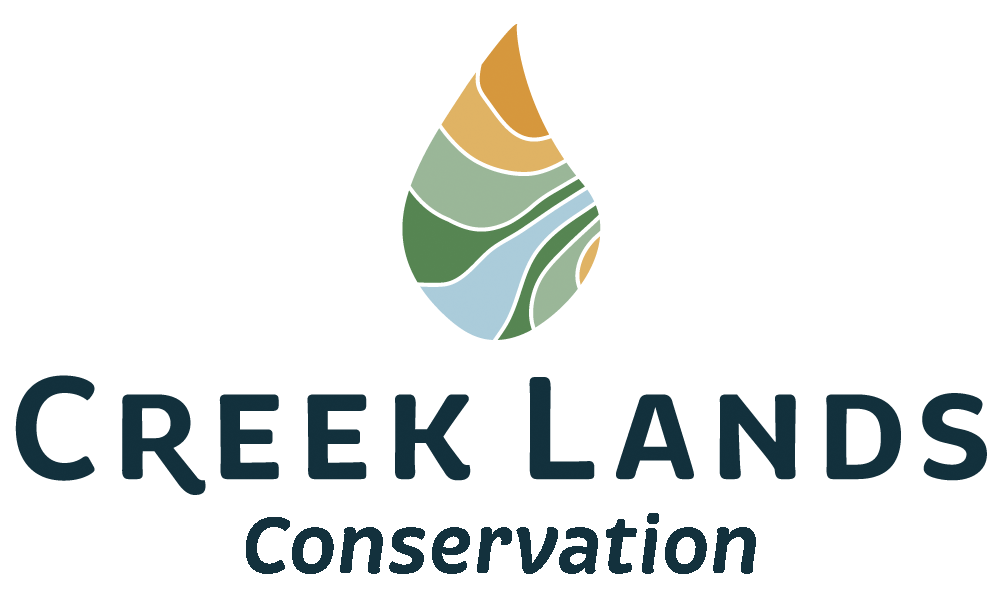Ecologically Critical Creek Flows in
San Luis Obispo County
San Luis Obispo County Low Flow Monitoring
An analysis to estimate the Environmental Water Demand (EWD) in creeks and rivers in San Luis Obispo County (County) was conducted by Stillwater Sciences in 2014. EWD is the amount of water needed in an aquatic ecosystem, or released into it, to sustain aquatic habitat. For this analysis, EWD was defined in relation to specific steelhead biological flow requirements during spring and summer.
The purpose of this analysis is to provide a preliminary estimate of the magnitude of in-stream flows that would support steelhead in creeks of San Luis Obispo County during the spring and summer. Juvenile steelhead trout spend one or more years growing in freshwater before returning to the ocean.
The estimates of EWD shown herein are minimum values to maintain aquatic systems and should not be interpreted as “enough” water to support long-term, sustainable steelhead populations or the complex ecosystem in which they live. This initial assessment was not intended to provide sufficient precision or detail from which to establish regulatory or mandatory water permit limits.
In 2016 Creek Lands Conservation was funded by the Wildlife Conservation Board (WCB) Streamflow Enhancement Program to measure instream freshwater flows to evaluate the conditions of local streams and determine which locations where obtaining and which locations were not meeting minimum EWD. Monitoring site information, EWD, and monitoring data collected by Creek Lands Conservation (2015-2018) can be viewed by clicking on bubble for each monitoring site. Further detail and data interpretation can be obtained in Creek Land’s report which can be downloaded below. Many thanks to our partner, Stillwater Sciences, which processed much of the spatial data viewed on this web-page.
California’s central coast communities are building their collective understanding about how to establish a functional water portfolio that meets a wide range of needs….
California’s central coast communities are building their collective understanding about how to establish a functional water portfolio that meets a wide range of needs….

- Stillwater Sciences. 2014. San Luis Obispo County Regional Instream Flow Assessment. Prepared by Stillwater Sciences, Morro Bay, California for Coastal San Luis Resource Conservation District, Morro Bay, California.
- Creek Lands Conservation, 2019. Final SLO County Low Flow Monitoring Report (2015-2018). Funded by WCB Streamflow Enhancement Program.
Data Summary
 Analysis Points: Analysis Points were established within all County watersheds with delineated high potential steelhead rearing habitat. Locations were selected to coincide with USGS or County gages where possible to support comparisons of flow estimates with historical and existing conditions. In areas without established gages analysis points were located to in areas with potential access, such as road crossings, to support the potential for site visits to measure instream flows. Environmental water demand was estimated for the spring (average of April and May flows) and summer (average of August and September flows) periods for Analysis Points.
Analysis Points: Analysis Points were established within all County watersheds with delineated high potential steelhead rearing habitat. Locations were selected to coincide with USGS or County gages where possible to support comparisons of flow estimates with historical and existing conditions. In areas without established gages analysis points were located to in areas with potential access, such as road crossings, to support the potential for site visits to measure instream flows. Environmental water demand was estimated for the spring (average of April and May flows) and summer (average of August and September flows) periods for Analysis Points.- Potential steelhead habitat: Potential rearing habitat for steelhead is based on the delineation of high potential steelhead rearing habitat from the analysis of Boughton and Goslin (2006). Potential steelhead migratory channels were delineated based on assuming that any river channel that does not have a high potential for rearing habitat, but is downstream of NOAA identified high rearing potential (Boughton and Goslin 2006) would need to provide flows sufficient to support upstream migration of adult steelhead and downstream migration of juvenile steelhead.
- Stream Flow Gages: Spring (average of April and May flows) and summer (average of August and September flows) flows were calculated for all USGS and County gages within the County for which daily flow data was available. Calculations were based on the period of record.
- Physical Landscape Units: Stratification of watersheds and Analysis Points into Physical Landscape Units (PLU) are based on protocols developed for the Central Coast Regional Water Quality Control Board in support of their hydromodification control criteria (Stillwater Sciences 2011).
- Drainage Area: Drainage Area is calculated for each Analysis Point as the contributing drainage area upstream of the Analysis Point location.
Boughton, D. A., and M. Goslin. 2006. Potential steelhead over-summering habitat in the South-Central/Southern California coast recovery domain: maps based on the Envelope Method. NOAA-TM-NMFS-SWFSC-391. Prepared by National Marine Fisheries Service, Southwest Fisheries Science Center, La Jolla, California.
Stillwater Sciences. 2011. Development and implementation of hydromodification control methodology. Watershed characterization Part 2: Watershed management zones and receiving-water conditions. Prepared by Stillwater Sciences and TetraTech, Santa Barbara for Central Coast Regional Water Quality Control Board, San Luis Obispo, California.



